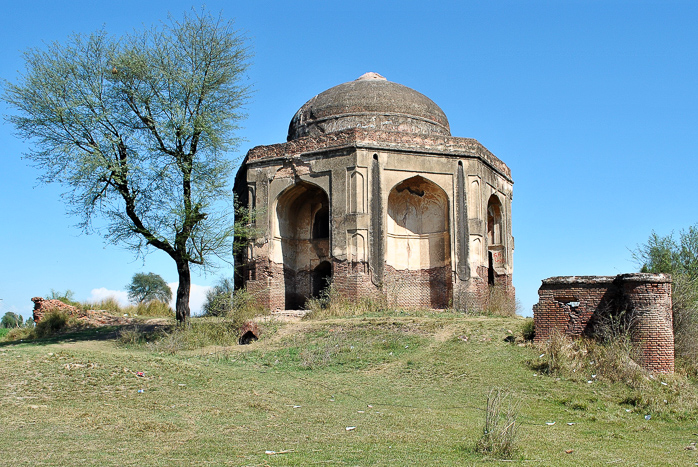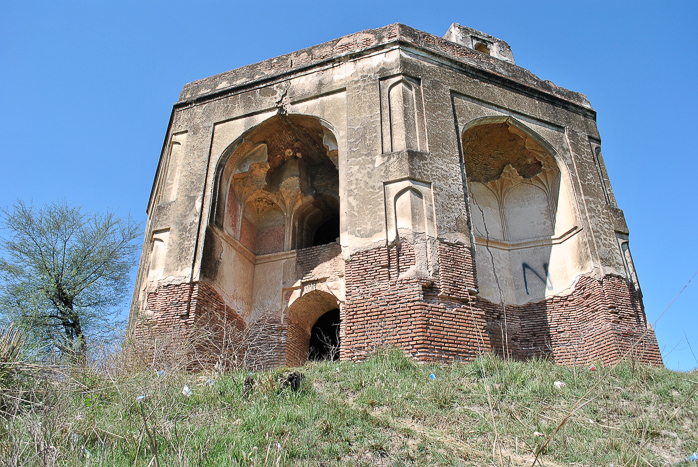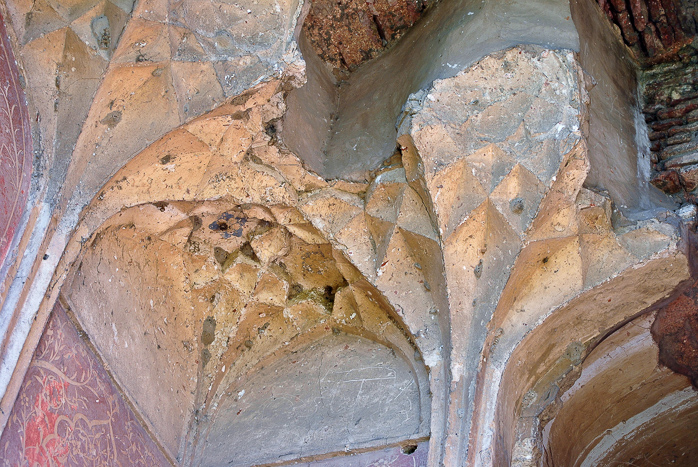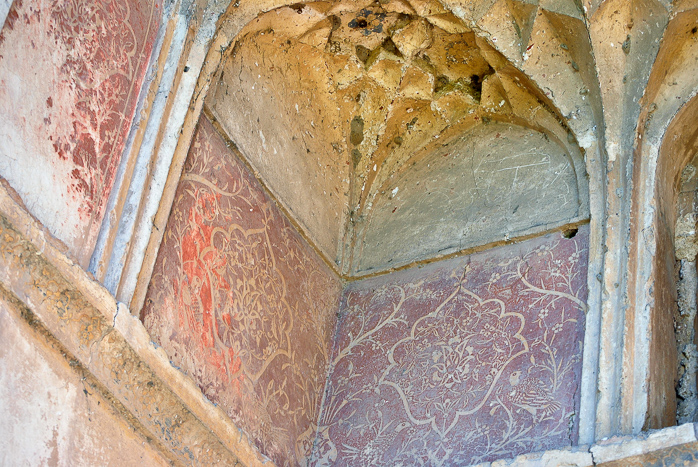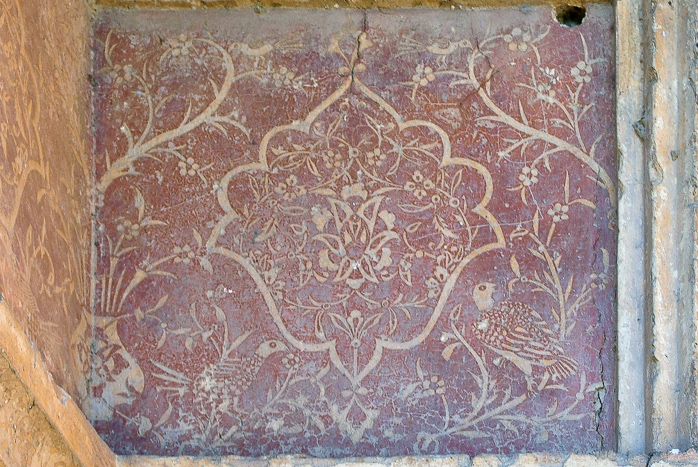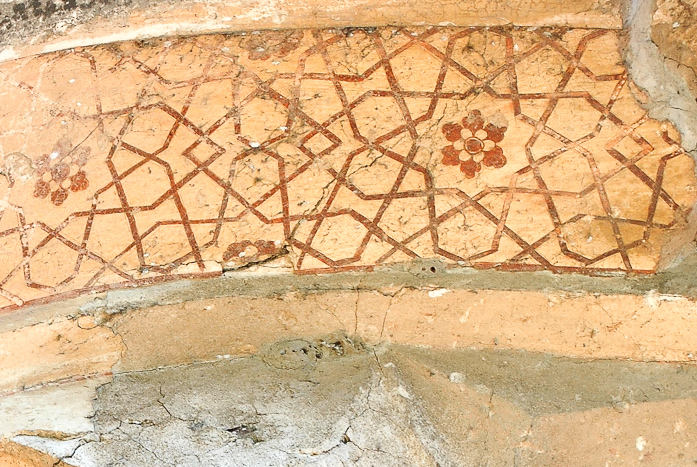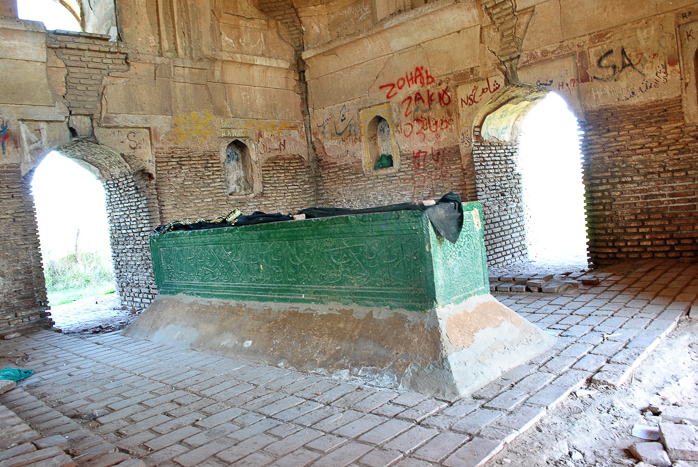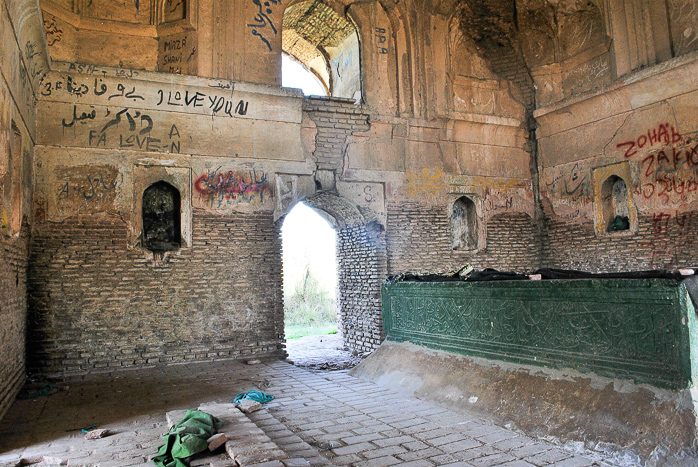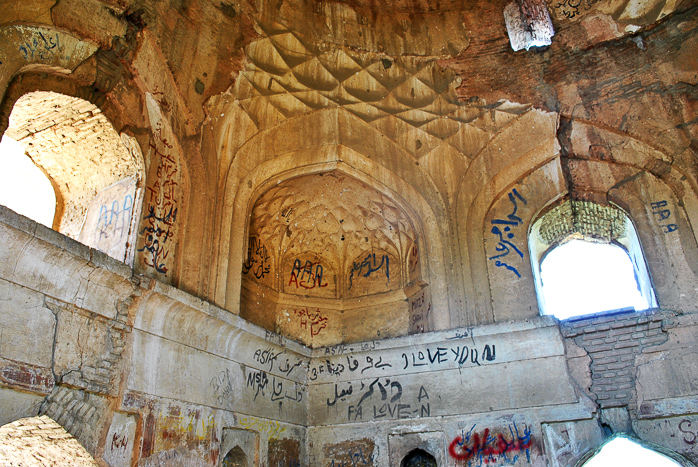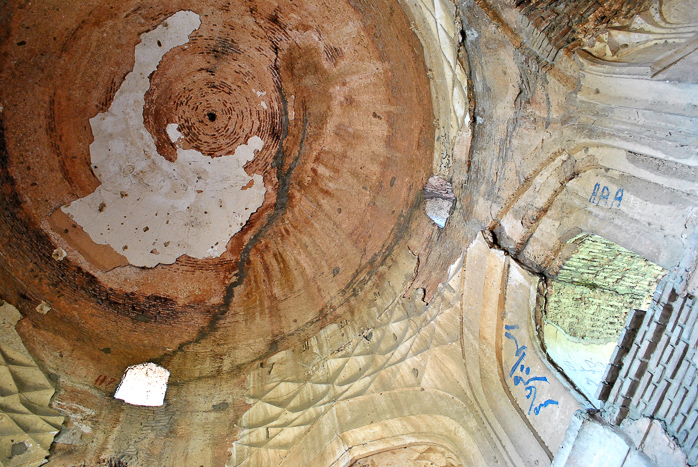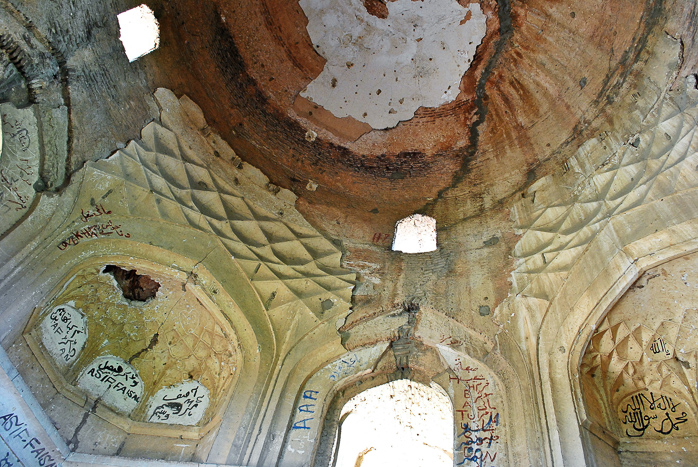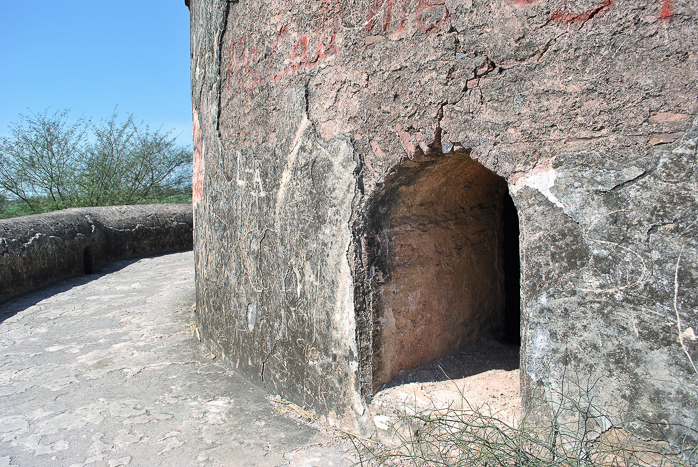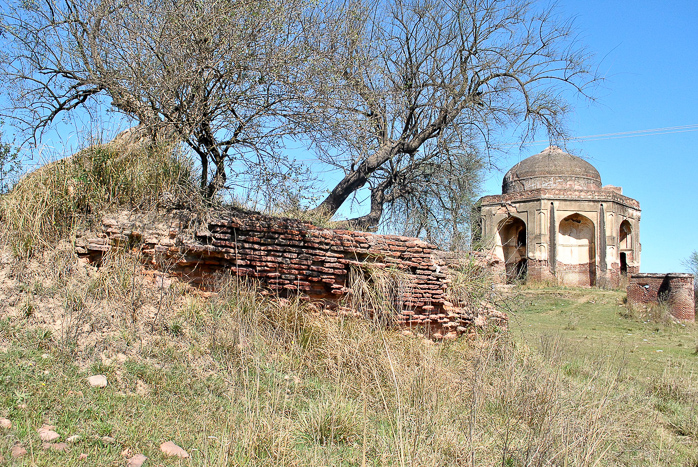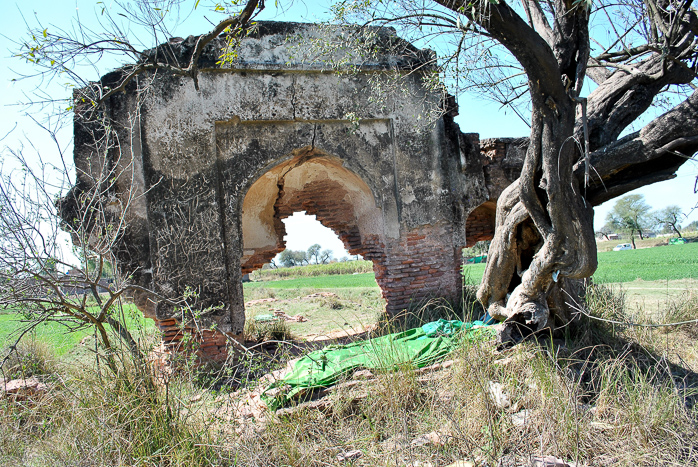Mirza Sheikh Ali Tomb
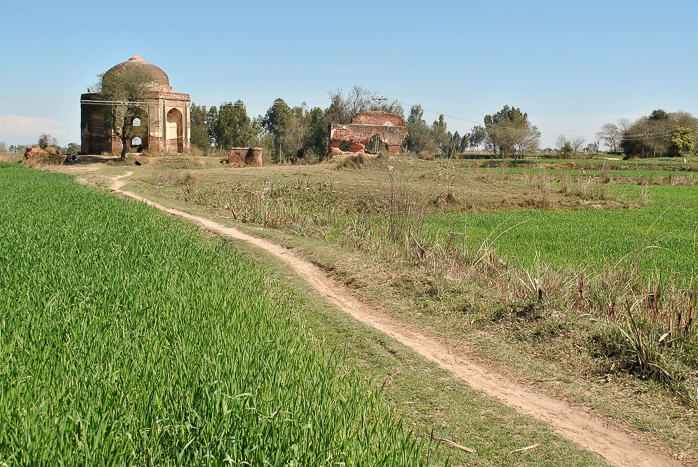
La tumba de Mirza Sheikh Ali se encuentra a 1 kilómetro al sur de Helaan, en el distrito de Mandi Bahauddin de Pakitan. Según una inscripción en el sarcófago, la tumba se completó en 1588 y alberga los restos de Mirza Sheikh Ali, un emir muerto en la batalla contra los miembros de la tribu Gakhar durante el gobierno del emperador mogol Akbar I (r. 1556-1605).
La tumba tiene la forma de un octágono con un diámetro de aproximadamente 21 metros. Cuatro de las caras están perforadas con aberturas pishtaq con nichos que ocupan los lados alternos. La cámara interior es de planta cuadrada, pasando a un techo abovedado. Estilísticamente, estas características son típicas de la arquitectura tardía y post-timúrida, similar en planta a las tumbas Sabz Burj y Nila Gumbad del norte de la India (sin embargo, la cúpula de la tumba de Mirza es mucho más baja). En última instancia, este estilo se derivó del ideal de un plan de nueve partes, o hasht bihisht, con ocho zonas distintas que rodean una cámara central.
El exterior de la tumba estaba —y todavía está en gran parte— cubierto con yeso. Los pishtaq alguna vez fueron decorados con pinturas florales vibrantes y lo que un diccionario geográfico de finales del siglo XIX describió como "patrones en zigzag", aunque la mayoría de estos ahora se han perdido. Se pueden encontrar algunos ejemplos sobrevivientes en las superficies superiores del pishtaq sur (ver imágenes 8 a 12), donde diseños florales con pájaros posados se encuentran debajo de los restos erosionados de las bóvedas de "panal" de muqarnas. A nivel del suelo, un par de rondas sobre cada una de las cuatro puertas están inscritas en rojo con el Kalimah Tayyibah (uno de los seis testamentos esenciales de la fe islámica).
La ubicación aislada de la tumba probablemente la ha preservado de la invasión de las viviendas modernas, a costa de ser un objetivo frecuente de vandalismo. Las superficies exteriores y la cámara interior están cubiertas de graffiti, lo que distrae especialmente en el interior. La superficie exterior de la cúpula posiblemente estuvo alguna vez cubierta con revestimientos de mármol o ladrillos finos, de los que no quedan rastros.
The tomb of Mirza Sheikh Ali stands about 1 kilometer south of Helaan in Pakitan's Mandi Bahauddin district. According to an inscription on the sarcophagus, the tomb was completed in 1588 and houses the remains of Mirza Sheikh Ali, an emir killed in battle against Gakhar tribesmen during the rule of the Mughal emperor Akbar I (r. 1556-1605).
The tomb is in the form of an octagon with a diameter of approximately 21 meters. Four of the faces are pierced with pishtaq openings with niches occupying the alternate sides. The interior chamber is square in plan, transitioning to a domed ceiling. Stylistically, these features are typical of late and post-Timurid architecture, similar in plan to the Sabz Burj and Nila Gumbad tombs of North India (however, the dome at Mirza's tomb is much lower). Ultimately, this style was derived from the ideal of a ninefold plan, or hasht bihisht, with eight distinct zones surrounding a central chamber.
The exterior of the tomb was—and still largely is—covered with plaster. The pishtaqs were once decorated with vibrant floral paintings and what a late 19th century gazetteer described as "zigzag patterns", though most of these are now lost. A few surviving examples may be found in the upper surfaces of the south pishtaq (see images 8 through 12), where floral designs inset with perching birds stand beneath the weathered remains of muqarnas "honeycomb" vaulting. At ground level, a pair of roundels over each of the four doorways is inscribed in red with the the Kalimah Tayyibah (one of the six essential testaments of Islamic faith).
The isolated location of the tomb has likely preserved it from encroachment by modern dwellings, at the cost of being the frequent target of vandalism. The outer surfaces and the inner chamber are covered in graffiti, which is particularly distracting in the interior. The outer surface of the dome was possibly once covered in marble cladding or fine brickwork, of which no traces remain.
